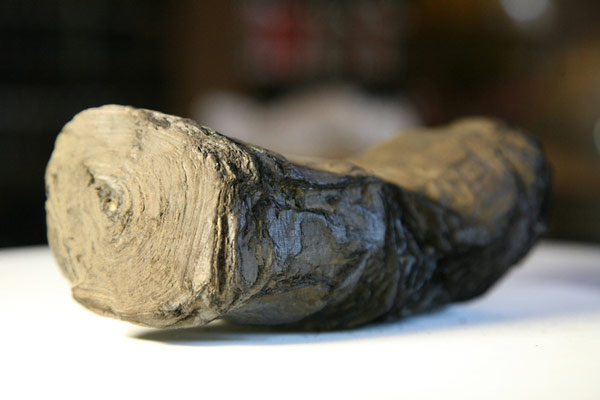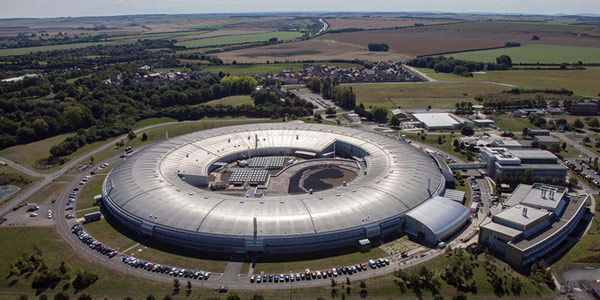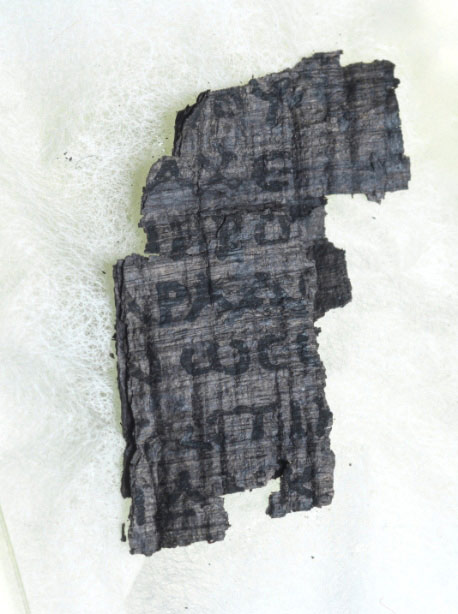Scientists use light that is '10 billion times brighter' than the Sun to read a thousand-year-old scroll
The scientists got their scrolls last October and are expected to read them in six months. So in about 2 months, we will know what the old scroll was written.
Scientists from the University of Kentucky say they are perfecting the technique of using machines to read the contents of a 2,000-year-old scroll. The research leader, Professor W. Brent Seales, who is also the head of the University of Kentucky's Digital Restoration Steering Committee, told CNN that they had used the power of the synchrotron to read the contents. Use ancient paper rolls. Returning from their business trip in the UK, they brought with them detailed photos of every word on the scroll.

The home of this synchrotron is called Diamond Light Source. Here, their advanced machine can propel electrons to fly at speeds close to the speed of light, and emit light 10 billion times brighter than the Sun.
The Synchrotron rotates the flow of energy ' concentrating on a laser-like point ', Professor Seales said, ' the generated light waves pass through [layers of paper] very quickly .'
 The headquarters of Diamond Light Source.
The headquarters of Diamond Light Source.
What is special about this scroll that makes scientists take advantage of the 10 billion times the amount of bright light the Sun has? This was when the volcano Vesuvius erupted and engulfed Pompeii and Herculaneum in flames and smog in 79 AD, the scroll buried in the ashes.
It was believed that the scroll had something to do with Julius Caesar's birth, but the attempt to open it to read failed: the thousand-year-old scroll was too old to open, opening it in the usual way that would cause a calendar. valuable history turned into scrap paper. So researchers at the University of Kentucky had to use machines to read the contents of rolled-up papyrus several hundred layers thick.

In addition to the aforementioned 'super light', the research team led by Professor Seales also applied machine learning to clearly distinguish between ink and papyrus across hundreds of layers of stacked paper. . Mr. Seales described the effort to get materials from a synchrotron facility like Hollywood filmmakers cut images to create such effects.
Professor Seales estimates that it will take 6 months for them to successfully read the ancient scroll. It is not clear what the thousand-year text will be, maybe this is the writing pad of a literate student, but it may also be the brilliant words of an ancient sage.
' One of the important things is to know how to connect ourselves with humanity, even though the amount of time passed between the two generations is enormous. If we have tried to preserve it, then we should try to read it , '' Mr. Seales said.
- Asteroid crater is over 2.2 billion years old
- Discovered 437 million years old scorpion fossils
- 'Reading' with ultra-powerful X-rays
- The US produces about one billion light-years of sunlight
- The supernova is 20 times brighter than the Milky Way
- Successfully decode the 1,500-year-old bible scroll
- The brightest galaxy in the universe is evaporating
- The thousand-year-old ancient bowl sold a record price of VND 850 billion
- Photo of the universe: The star is 150 times brighter than the Sun.
- 20 interesting information about lighting you may not know
- The mystery of the thousand-year lights does not turn off
- Comet is brighter than the full moon visiting Earth in 2013
- The thousand-star explosion shot gold, silver and platinum throughout the universe
- Video: Giant scroll clouds across the Pacific Ocean
 Discovered an ancient centipede fossil 99 million years old
Discovered an ancient centipede fossil 99 million years old Discovered bat-like dinosaurs in China
Discovered bat-like dinosaurs in China Discovered a 200-year-old bronze cannon of the coast
Discovered a 200-year-old bronze cannon of the coast Discover 305 million-year-old spider fossils
Discover 305 million-year-old spider fossils